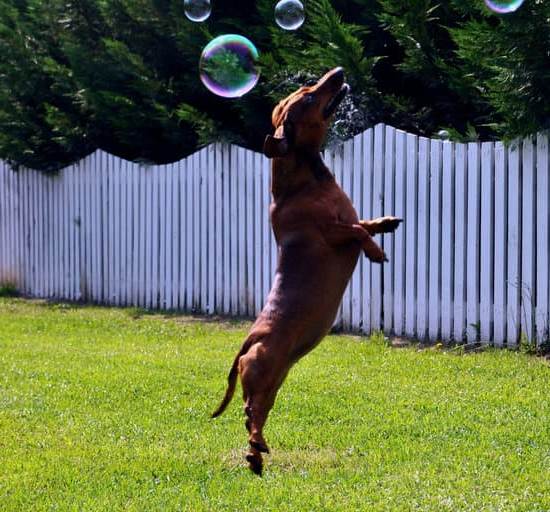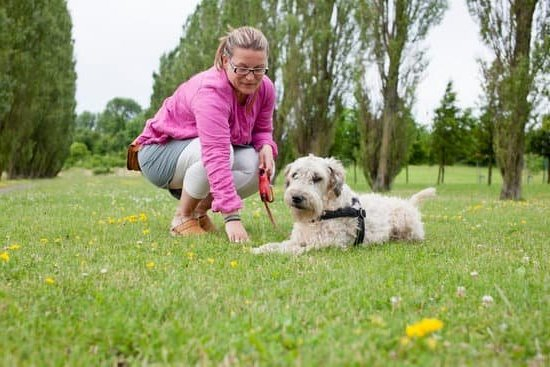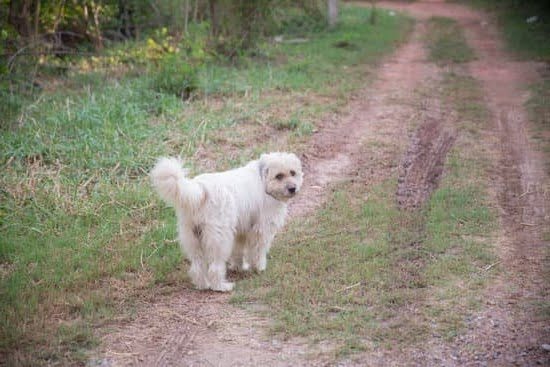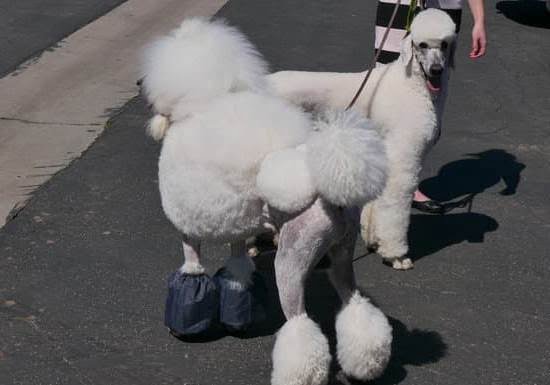K9 dogs, also known as police dogs, service dogs, or working dogs, play a vital role in numerous aspects of society. From law enforcement agencies to search and rescue operations, from therapy and assistance to military and special forces missions, these highly trained canines demonstrate unmatched skills and unwavering loyalty. In this article, we will delve into the world of K9 dogs to better understand their significance and the specialized training they undergo.
The use of dogs for various tasks can be traced back centuries, with their roles evolving and expanding over time. Today, K9 dogs have become indispensable assets in many fields due to their keen sense of smell, agility, strength, and intelligence. Whether it’s tracking criminals, searching for missing persons in disaster situations, providing emotional support in healthcare facilities or assisting soldiers on the frontlines, these remarkable animals have proven themselves time and again.
However, it is important to recognize that behind every successful K9 dog is countless hours of training. The specialized training that these canines go through allows them to perform their duties effectively and ensures the safety of both the dog and its handler. From basic obedience training to advanced techniques specific to various roles, the training encompasses a wide range of skills such as scent detection, tracking, apprehension techniques and obedience commands.
As we dive deeper into the world of K9 dogs in this article series, we will explore their history from humble beginnings as working animals to modern-day heroes. We will delve into different types of K9 dogs and their specialized roles within law enforcement agencies as well as search and rescue operations.
Furthermore, we will shed light on therapy and assistance dogs that provide comfort and support to individuals with disabilities or mental health conditions. Finally, we will examine military and special forces K9s that serve at the frontlines alongside human counterparts.
By gaining insight into the multifaceted roles played by K9 dogs in our society along with an understanding of their training, we can appreciate and support these remarkable animals who selflessly serve and protect us in countless ways.
History of K9 Dogs
K9 dogs have a rich and fascinating history that dates back centuries. From humble beginnings to becoming modern day heroes, these remarkable canines have played an integral role in various tasks and industries. In this section, we will trace the origins of using dogs for various tasks and discuss the evolution of K9 training techniques and methods.
The history of using dogs for specific tasks can be traced back to ancient civilizations. Dogs were initially domesticated for hunting purposes, with certain breeds being bred specifically for their specialized skills in tracking, retrieving, or herding. Over time, humans recognized the unique abilities of dogs and began utilizing them in other areas such as warfare, communications, and transportation.
One notable example is the use of messenger dogs during World War I and II. These brave canines delivered messages between troops on the front lines when traditional forms of communication were unreliable or impossible. Their loyalty, intelligence, and speed made them indispensable in relaying vital information.
As the role of dogs expanded beyond just hunting or messenger duties, so did their training techniques. Initially, training methods relied mostly on punishment-based techniques. However, with advancements in behavioral science and a better understanding of canine psychology, positive reinforcement training became more prevalent. This approach focuses on rewarding desired behaviors rather than punishing unwanted ones.
Today, K9 training has evolved into a highly specialized field that incorporates scientific principles to mold these incredible animals into valuable assets across various industries. The emphasis is not only on their physical attributes but also their mental capabilities as well as their ability to work effectively with humans.
Types of K9 Dogs and Their Specific Specializations
K9 dogs come in various breeds and each breed has its own unique characteristics and specialized abilities. Here is a breakdown of the different types of K9 dogs commonly used in various fields, along with their specific specializations:
- German Shepherds: German Shepherds are one of the most popular and versatile breeds used as K9 dogs. They are known for their intelligence, loyalty, and work ethic. German Shepherds are commonly trained for tasks such as search and rescue, tracking, apprehension of suspects, and explosive detection.
- Labrador Retrievers: Labrador Retrievers are often chosen for their friendly and sociable nature. They make excellent search and rescue dogs due to their keen sense of smell and ability to cover large areas quickly. Labradors are also trained as therapy dogs because they have a calm temperament that helps provide emotional support to people in hospitals or other facilities.
- Belgian Malinois: Belgian Malinois are highly intelligent and possess great agility. They excel in tasks such as police work, including searching for narcotics or explosives, tracking criminals, and apprehending suspects. Their natural protective instincts also make them suitable for personal protection duties.
- Bloodhounds: Bloodhounds have an exceptional sense of smell, making them excellent tracking dogs. They are commonly used in search operations for missing persons or fugitives due to their ability to follow scent trails over long distances.
When selecting dogs for specific tasks, various factors are taken into consideration. These include the breed’s physical attributes (such as size, strength, or speed), temperament (such as trainability or energy level), health history, and overall suitability for the intended role.
It is important to note that while these breeds may be more commonly associated with specific specializations, individual dogs within any breed can possess unique talents or skills that make them well-suited for different tasks.
Overall, the selection process involves careful consideration to ensure that each K9 dog is trained to perform their specialized role effectively and efficiently. By matching the right breed with the right role, K9 units can maximize their potential and contribute significantly to the fields in which they serve.
Training K9 Dogs
Training is a crucial aspect of developing a K9 dog’s skills and abilities. It begins from the time they are puppies and continues until they reach their full potential as professional working dogs. The training process for K9 dogs involves various stages, each focusing on different aspects of their development.
The first stage of training for K9 dogs is basic obedience. This foundation includes essential commands such as sit, stay, come, and heel. Teaching these commands helps to establish a strong bond between the handler and the dog while providing a level of control necessary for further training. Basic obedience also ensures that the dog can respond reliably to commands even in high-stress situations.
Once the K9 dog has mastered basic obedience, they move on to more advanced training required for their specialized tasks. For example, if the dog is being trained for law enforcement purposes, they will receive specific instruction in areas such as searching, tracking, and apprehension techniques. On the other hand, if the dog is being trained for search and rescue operations, their training will focus on skills such as scent detection, rubble navigation, and water rescues.
Throughout all stages of training, positive reinforcement techniques are typically used to encourage desired behavior and discourage unwanted behavior. Training sessions often involve rewards such as treats or praise when the dog successfully completes a task. Additionally, handlers consistently provide clear cues or commands so that dogs can understand what is expected of them.
Crime-Fighting K9s
Law enforcement agencies around the world rely on highly trained K9 dogs to assist in various crime-fighting tasks. These remarkable canines play a crucial role in maintaining public safety, with their exceptional skills and abilities making them an invaluable asset to police forces. From searching for suspects to detecting drugs and explosives, police dogs are highly specialized in their duties.
One of the primary roles of police dogs is searching for individuals who are evading arrest or hiding from law enforcement. These dogs undergo rigorous training that enables them to track scents left behind by suspects.
Their keen sense of smell allows them to follow even the faintest scent trail, making them highly effective at locating fleeing criminals or missing persons. In addition to tracking, police dogs are also trained in apprehension techniques, allowing them to safely detain suspects until officers can arrive.
In addition to tracking and apprehending suspects, police dogs are trained in drug and explosive detection. These canine partners have an incredible ability to detect illegal substances or hazardous materials that may be hidden or concealed. With their keen noses, they can quickly identify drugs such as cocaine, methamphetamine, heroin, and marijuana.
They can also detect a wide range of explosives, including gunpowder and homemade bombs. Their accuracy and efficiency in detecting these substances play a vital role in ensuring public safety and protecting communities.
| Duties | Skills |
|---|---|
| Searching for suspects | Tracking scents left behind by individuals |
| Apprehending criminals | Training in safe detainment techniques |
| Drug detection | Ability to detect various illegal substances |
| Explosive detection | Aptitude in identifying hazardous materials |
Police dogs are critical members of law enforcement teams, offering unique capabilities that humans simply cannot replicate. Their specialized training and exceptional skills make them indispensable allies to police officers in their efforts to combat crime. These brave and highly trained canines deserve recognition and support for the vital role they play in keeping communities safe.
K9s in Search and Rescue Operations
In this section, we will delve into the crucial role of K9 dogs in search and rescue operations and uncover their life-saving skills. K9 dogs have proven to be an invaluable asset in finding missing persons during disaster situations and locating survivors trapped under rubble. Their unparalleled abilities in wilderness and water searches have provided hope and closure to countless individuals and families.
K9 dogs are extensively trained to assist search and rescue teams in a variety of scenarios. In disaster situations such as earthquakes, avalanches, or building collapses, these highly skilled canines are able to utilize their keen senses of smell and hearing to locate victims who may be trapped or hidden from plain sight. They are often capable of covering large areas more quickly than human searchers, greatly increasing the efficiency of rescue efforts.
One of the key skills that sets search and rescue K9s apart is their ability to detect a person’s scent even under layers of debris or water. They are trained to identify the specific odor profile of humans, differentiating it from other scents present at the scene. This enables them to pinpoint the location of survivors who may be unconscious or unable to respond audibly.
To prepare K9 dogs for search and rescue missions, they undergo rigorous training that includes simulating various disaster scenarios. They learn how to navigate through unstable terrain, traverse rubble piles, and work in confined spaces. Additionally, they become adept at working with specialized equipment such as harnesses, ropes, or flotation devices when conducting water searches.
The impact of K9 dogs in search and rescue operations cannot be overstated. Their abilities have been responsible for saving numerous lives by significantly reducing response times during critical situations. The partnership between these remarkable canines and their handlers is built on trust and communication, allowing for seamless coordination between human rescuers and their four-legged counterparts.
| Year | Number of Successful Rescues |
|---|---|
| 2018 | 237 |
| 2019 | 315 |
| 2020 | 284 |
These numbers highlight the consistent effectiveness of K9 dogs in search and rescue operations year after year. As we continue to rely on their life-saving skills, it is crucial to support and appreciate the training programs that ensure their proficiency in these critical tasks.
Therapy and Assistance Dogs
Therapy and assistance dogs play a crucial role in bridging the gap between human and canine companions. These specially trained dogs provide comfort, support, and assistance to individuals in various settings, including hospitals, schools, and other facilities. The training necessary for therapy and emotional support dogs is unique as they must be well-behaved, calm, and able to provide comfort in challenging situations.
Therapy dogs are often used in healthcare settings to bring joy and comfort to patients. They are trained to be calm and gentle around people of all ages, especially those who may be experiencing physical or emotional distress.
These dogs have a remarkable ability to sense when someone needs their presence. Whether it’s sitting quietly by a patient’s side during a medical procedure or providing a friendly nudge or lick to someone feeling lonely or anxious, therapy dogs can make a significant difference in enhancing the overall well-being of patients.
In addition to therapy dogs, there are also assistance dogs specifically trained to assist individuals with disabilities or mental health conditions. These highly skilled dogs can perform tasks such as opening doors, retrieving items, turning on lights, and even alerting their owners to specific sounds or smells. Assistance dogs not only provide practical help but also offer invaluable emotional support to their handlers. The bond between an assistance dog and its owner is built on trust, companionship, and mutual reliance.
The impact of therapy and assistance dogs goes beyond the individual recipients; these four-legged companions also have positive effects on the staff members working in various facilities. Their presence often creates a calming atmosphere that reduces stress levels among employees as well.
It is important not to overlook the extensive training that goes into preparing these special dogs for their roles. Trainers work tirelessly with these animals from an early age to ensure they possess the required temperament, obedience skills, and appropriate behavior for their specific tasks.
Therapy and assistance dogs fill an essential role in society by bridging the communication gap between humans and canines. They offer unconditional love, support, and companionship to those who need it most.
Their specialized training enables them to provide comfort during difficult times and assistance in everyday tasks for individuals with disabilities or mental health conditions. By appreciating and supporting therapy and assistance dog programs, we can ensure these incredible animals continue to make a positive impact on the lives of many.
Military and Special Forces K9s
Military and special forces K9s play a vital role in providing support and protection at the frontlines. These highly trained canines are an indispensable asset to armed forces around the world, aiding in bomb detection, scout missions, and providing security. The specialized training required for these dogs ensures that they are prepared for the challenges they may face in combat situations.
Specialized Training for Military Dogs
Training military dogs begins at a young age, typically when they are around 10-14 months old. The selection process for potential military dogs is rigorous and thorough, assessing their temperament, drive, adaptability, and physical capabilities. Once selected, these dogs undergo basic obedience training to establish control and discipline.
After mastering basic obedience, military dogs receive training in specialized tasks such as scent detection and tracking. Bomb detection dogs are taught to identify explosive substances through intense training exercises that simulate real-life scenarios. These canines learn to locate hidden explosives with great accuracy, potentially saving countless lives on the battlefield.
Duties of Military Dogs
Military dogs serve a variety of roles on the frontlines. One of their primary responsibilities is bomb detection. By utilizing their powerful noses and intensive training, these canines are able to locate improvised explosive devices (IEDs) before they cause harm to military personnel or civilians.
Another crucial duty of military dogs is scouting missions. These canines have been trained to work alongside their human handlers to gather intelligence by locating individuals or detecting enemy presence in challenging terrain or under difficult conditions.
Additionally, military dogs provide security by patrolling areas and conducting searches for hidden threats. Their keen senses enable them to detect intruders long before humans could even be aware of their presence. Furthermore, these fearless animals assist in suspect apprehension if necessary.
The Indispensable Canine Partnership
The bond between military dogs and their handlers is crucial to their success on the frontlines. Handlers and dogs undergo extensive training together, creating a strong partnership built on trust and communication. This relationship allows both the handler and the dog to work seamlessly as a team in high-pressure situations.
These dedicated canines are not just assets; they become cherished companions to their handlers. The loyalty and dedication of military dogs are unparalleled, often leading to lifelong bonds between them and their human partners.
K9 Dogs in Sport and Competition
The World of Competitive K9 Sports
K9 dogs not only serve vital roles in law enforcement, search and rescue operations, therapy, and the military, but they also participate in various sports and competitions that test their skills and abilities. One popular field in which K9 dogs can showcase their talents is agility trials. Agility trials involve a series of obstacles that the dogs must navigate through quickly and accurately.
These obstacles may include hurdles, tunnels, weave poles, and A-frames. Dogs are judged based on their speed, precision, and ability to follow the handler’s commands.
Another competitive event that tests the capabilities of K9 dogs is obedience trials. In these trials, dogs demonstrate their obedience and responsiveness to commands from their handlers. They must perform a series of exercises such as heeling alongside the handler, staying in position for specified durations, recalls from a distance, and retrieving objects on command. Obedience trials assess the dog’s ability to listen attentively to their handler while maintaining focus even under distractions.
The Importance of Training for Competitive Events
In order for K9 dogs to excel in sports and competitions, rigorous training is necessary. Training begins with basic obedience skills such as sit, stay, come when called, and walking alongside the handler without pulling on the leash. As the dog progresses in training, more advanced techniques are introduced specific to each sport or competition.
For agility trials, dogs are taught how to navigate each obstacle with speed and accuracy by following verbal and physical cues from their handlers. They also receive training on finding the correct entrance or path for each obstacle as determined by the course layout.
In obedience trials, dogs must have a strong foundation in basic obedience before moving on to more complex exercises. Handlers use positive reinforcement techniques such as treats and praise during training sessions to motivate their canine partners.
The Bond Between Human Handlers and Their K9 Partners
Participating in sports and competitions requires a close bond between the human handler and their K9 partner. Dogs rely on their handlers for guidance, direction, and motivation during training and competition. At the same time, handlers must understand the unique strengths and abilities of their dogs in order to facilitate effective communication.
The bond between human handlers and K9 dogs extends beyond the training field or competition ring. These canine athletes often live with their handlers as part of the family unit, creating a strong connection built on trust and mutual respect. The partnership between a handler and their K9 dog is an essential component of success in any competitive event.
Competitive K9 sports not only showcase the incredible skills and abilities of these talented dogs but also foster teamwork, audience engagement, and admiration for both human handlers and canines working together towards a common goal.
Conclusion
In conclusion, K9 dogs play an indispensable role in various fields and their specialized training is crucial to their effectiveness and safety. From law enforcement agencies to search and rescue operations, therapy and assistance work, military missions, and even competitive sports, these highly trained canines contribute significantly to society.
The history of K9 dogs has evolved from humble beginnings to becoming modern-day heroes. They have been used for various tasks throughout history, and their training techniques and methods have continuously advanced over time. Today, K9 dogs are selected based on specific criteria for each task they perform, ensuring that they possess the necessary qualities and abilities to excel in their roles.
The significance of K9 dogs cannot be underestimated. In law enforcement, they play a vital role in searching, tracking, apprehending criminals, and detecting drugs or explosives. In search and rescue operations, they are instrumental in finding missing persons in disaster situations or locating survivors buried under rubble.
Therapy and assistance dogs provide comfort and assistance to individuals with disabilities or mental health conditions. Military dogs are at the frontlines during combat, providing security, performing bomb detection duties, and saving human lives.
It is important for readers to appreciate and support K9 programs. The training behind these remarkable animals ensures that they are able to carry out their tasks effectively while keeping themselves safe. By understanding the indispensable role of K9 dogs in society and the extensive training that goes into shaping them into capable professionals across various fields, we can better appreciate the dedication of these extraordinary animals and their handlers.
Frequently Asked Questions
What do K9 dogs do?
K9 dogs, also known as police dogs or working dogs, are specifically trained animals that work closely with law enforcement agencies to assist in various tasks. These highly intelligent and well-trained dogs are primarily used for sniffing out illegal drugs, explosives, and firearms, but they also play a vital role in tracking down suspects, locating missing persons, and apprehending criminals.
Due to their acute sense of smell and hearing, K9 dogs can quickly search large areas or vehicles for hidden contraband or individuals.
What skills do K9 dogs have?
K9 dogs possess a wide range of skills that make them indispensable partners to their handlers in law enforcement. One of the most notable skills is their exceptional olfactory ability; they have significantly enhanced senses of smell compared to humans, enabling them to detect even trace amounts of substances. These dogs are also trained in obedience, agility, and endurance.
They can maneuver through challenging terrains and obstacles effortlessly and efficiently. Moreover, many K9 units specialize in specific areas like explosive detection, narcotics detection, or search and rescue operations. These specializations require additional training focused on particular scent profiles or tasks.
What are the benefits of a K9 police dog?
The utilization of K9 police dogs offers several significant benefits to law enforcement agencies. One crucial advantage is their unmatched ability to detect illegal substances accurately and efficiently.
Dogs’ noses are capable of detecting scents that would be virtually undetectable by human officers alone. This makes them invaluable when it comes to combating drug trafficking or preventing potential terrorist attacks involving explosives.

Welcome to the blog! I am a professional dog trainer and have been working with dogs for many years. In this blog, I will be discussing various topics related to dog training, including tips, tricks, and advice. I hope you find this information helpful and informative. Thanks for reading!





